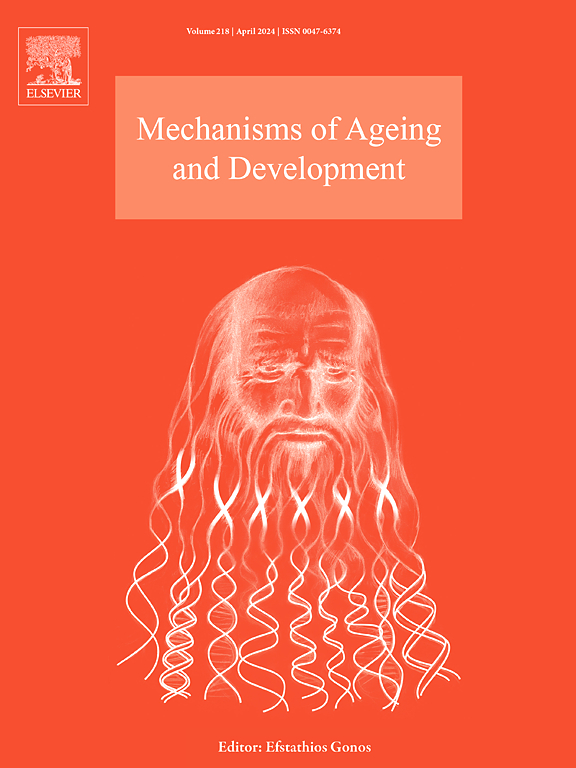造血和间充质细胞的变化及其在衰老和与年龄相关的骨骼疾病中的相互作用
IF 5.1
3区 医学
Q2 CELL BIOLOGY
引用次数: 0
摘要
衰老对间充质和造血系细胞,包括它们的祖细胞--骨骼干细胞(SSCs)和造血干细胞(HSCs)--产生深远影响。骨骼干细胞对骨骼的发育、稳态和再生至关重要,它通过分化成成骨细胞、脂肪细胞和其他有助于骨髓(BM)微环境的细胞系来维持骨骼的完整性。同时,造血干细胞可维持造血和免疫功能。随着年龄的增长,造血干细胞和造血干细胞的功能会显著下降,部分原因是细胞衰老--衰老的特征是不可逆转的生长停滞、分泌促炎因子(衰老相关分泌表型,SASP)和再生潜能受损。在造血干细胞中,衰老会以牺牲骨生成为代价,使细胞系向脂肪生成倾斜,从而导致骨髓脂肪含量增加、骨质量下降和骨质疏松症。同样,衰老的造血干细胞表现出自我更新能力减弱、分化偏差和炎症加剧,从而损害造血功能和免疫功能。在这篇综述中,我们探讨了造血干细胞和造血干细胞与年龄相关的细胞和分子变化、它们在衰老微环境中的血统决定以及骨骼和造血系统之间的相互作用。我们还讨论了衰老驱动的改变在骨髓稳态中的作用,以及针对细胞衰老机制如何为缓解与年龄相关的骨骼和造血功能衰退提供治疗策略。本文章由计算机程序翻译,如有差异,请以英文原文为准。
Changing landscape of hematopoietic and mesenchymal cells and their interactions during aging and in age-related skeletal pathologies
Aging profoundly impacts mesenchymal and hematopoietic lineage cells, including their progenitors—the skeletal stem cells (SSCs) and hematopoietic stem cells (HSCs), respectively. SSCs are crucial for skeletal development, homeostasis, and regeneration, maintaining bone integrity by differentiating into osteoblasts, adipocytes, and other lineages that contribute to the bone marrow (BM) microenvironment. Meanwhile, HSCs sustain hematopoiesis and immune function. With aging, SSCs and HSCs undergo significant functional decline, partly driven by cellular senescence—a hallmark of aging characterized by irreversible growth arrest, secretion of pro-inflammatory factors (senescence associated secretory phenotype, SASP), and impaired regenerative potential. In SSCs, senescence skews lineage commitment toward adipogenesis at the expense of osteogenesis, contributing to increased bone marrow adiposity , reduced bone quality, and osteoporosis. Similarly, aged HSCs exhibit diminished self-renewal, biased differentiation, and heightened inflammation, compromising hematopoietic output and immune function. In this review, we examine the age-related cellular and molecular changes in SSCs and HSCs, their lineage decisions in the aging microenvironment, and the interplay between skeletal and hematopoietic compartments. We also discuss the role of senescence-driven alterations in BM homeostasis and how targeting cellular aging mechanisms may offer therapeutic strategies for mitigating age-related skeletal and hematopoietic decline.
求助全文
通过发布文献求助,成功后即可免费获取论文全文。
去求助
来源期刊
CiteScore
11.10
自引率
1.90%
发文量
79
审稿时长
32 days
期刊介绍:
Mechanisms of Ageing and Development is a multidisciplinary journal aimed at revealing the molecular, biochemical and biological mechanisms that underlie the processes of aging and development in various species as well as of age-associated diseases. Emphasis is placed on investigations that delineate the contribution of macromolecular damage and cytotoxicity, genetic programs, epigenetics and genetic instability, mitochondrial function, alterations of metabolism and innovative anti-aging approaches. For all of the mentioned studies it is necessary to address the underlying mechanisms.
Mechanisms of Ageing and Development publishes original research, review and mini-review articles. The journal also publishes Special Issues that focus on emerging research areas. Special issues may include all types of articles following peered review. Proposals should be sent directly to the Editor-in-Chief.

 求助内容:
求助内容: 应助结果提醒方式:
应助结果提醒方式:


